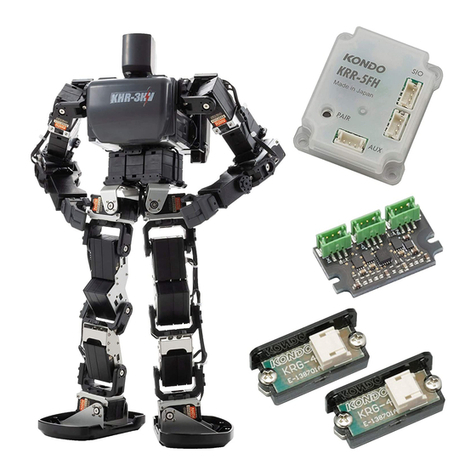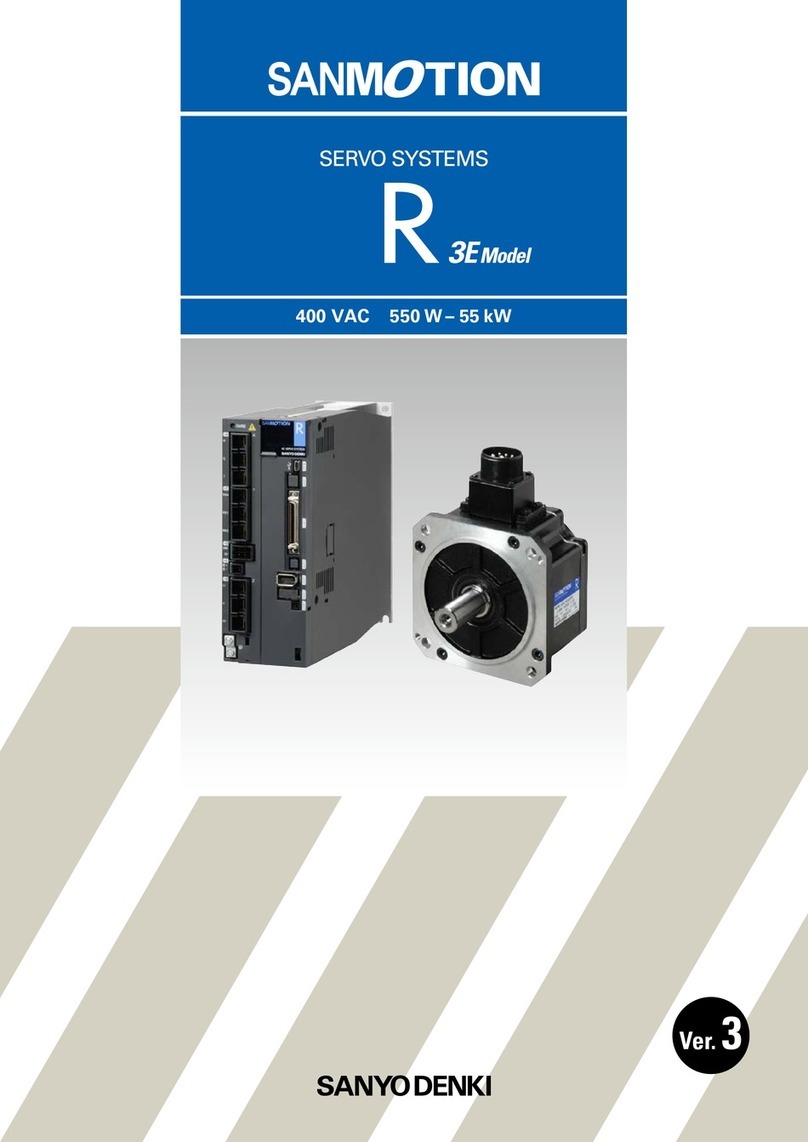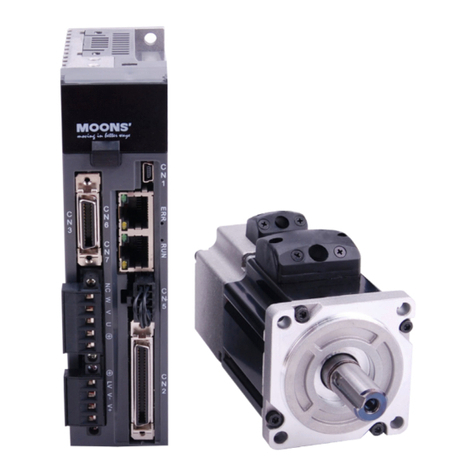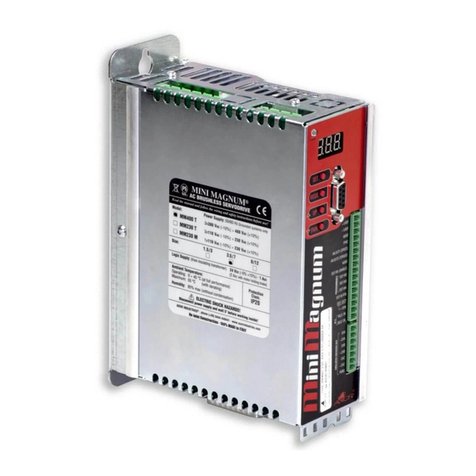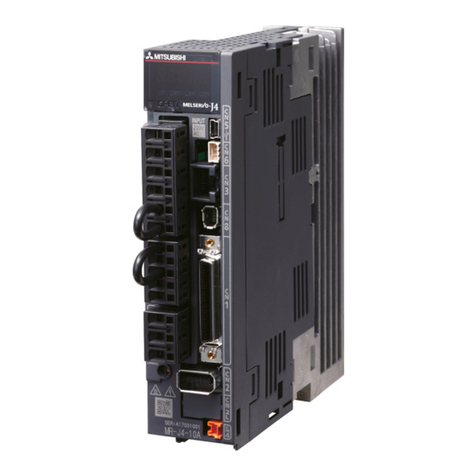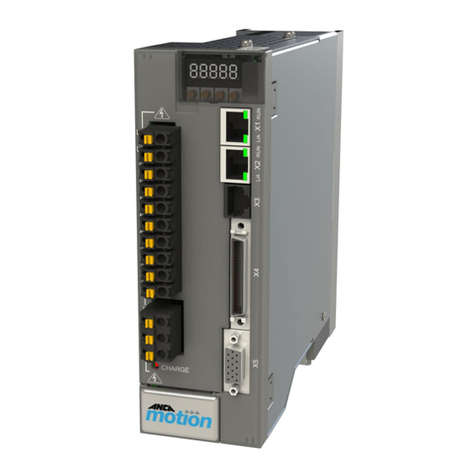Gnutti Group TiEmme 9538 User manual

9538 SERVOMOTORE ELETTRICO ROTATIVO PER VALVOLA A SFERA A 6 VIE (ART. 2130SM)
DESCRIZIONE
Il servomotore elettrico rotativo art. 9538 è idoneo per la motorizzazione della valvola a sfera a 6 vie Tiemme art. 2130SM.
Il comando avviene tramite sistemi di regolazione che forniscono un segnale analogico pilota (Y) che può essere
0...10, 2...10 VDC oppure 0...20, 4...20 mA e che viene accettato secondo la programmazione eseguita sulla scheda
(configurazione di fabbrica 0...10 VDC).
In funzione del segnale pilota Y il servomotore si posiziona entro il campo di lavoro dell’organo di regolazione avente
una rotazione di 90°.
E’ disponibile in uscita, qualunque segnale pilota venga utilizzato, un segnale analogico U variabile tra 0 e 10 VDC che indica
la posizione momentanea del servomotore.
IT
CARATTERISTICHE TECNICHE
www.tiemme.com
Alimentazione: 24 VAC 0…10 VDC (segnale in ingresso modificabile mediante programmazione
sulla scheda)
Assorbimento: 5,6 VA
Tempo di rotazione: 120 sec. / 90°(tempo di rotazione modificabile mediante programmazione sulla scheda)
Coppia massima: 13 Nm
Campo temperatura di funzionamento: 0…50 °C
Grado di protezione: IP50
INSTALLAZIONE
- Evitare la posizione del servomotore capovolto oppure con cavo di alimentazione dall’alto in quanto condensa o gocce
d'acqua potrebbero comprometterne il funzionamento.
- Qualora necessario procedere con la modifica alle impostazioni di funzionamento del servomotore (tipo di ingresso – tempo
di rotazione – senso di rotazione), per dettagli riferirsi alla sezione “ISTRUZIONI DI SETTAGGIO” della presente
documentazione tecnica.
- Si consiglia sempre di posizionare il servomotore a metà corsa prima di accoppiare il motore alla valvola, anch’essa
posizionata a metà corsa.
- Per il posizionamento del servomotore premere il pulsante di sblocco e ruotare la manopola sino a far coincidere l’indice
con il centro della scala serigrafata sul coperchio.
- Accoppiare il servomotore alla valvola e fissarlo con la vite in dotazione. L’accoppiamento avviene mediante vite centrale
sull’albero (tipo EASY CLICK).
IT
ISTRUZIONI DI SETTAGGIO
- Eseguire i collegamenti elettrici come indicato nello schema riportato di seguito:
- Alimentare il servomotore: alla prima messa in servizio, o tutte le volte che viene tolta o ridata l’alimentazione, il
servomotore esegue un’autoregolazione ruotando in senso orario sino a raggiungere il suo fine corsa in modo da definire
così la posizione di “0”, dopo di che si posiziona secondo il valore del segnale pilota Y.
N.B. Un’eventuale manovra manuale va eseguita solo dopo aver tolto l’alimentazione.
Qualora si dovessero apportare modifiche alla programmazione è necessario prima togliere l’alimentazione.
dove:
1-2 Alimentazione 24VAC ±10% 50Hz
3 Segnale pilota Y (il polo negativo del segnale è comune al morsetto 2)
4-5 Uscita analogica del segnale di posizione U [V]
Tiemme Raccorderie S.p.A. declina ogni responsabilità in caso di guasti e/o incidenti qualora l’installazione non
sia stata realizzata in conformità con le norme tecniche e scientifiche in vigore e in conformità a manuali, cataloghi e/o
relative disposizioni tecniche indicate da Tiemme Raccorderie S.p.A.
Il servomotore viene fornito con le seguenti impostazioni di funzionamento:
segnale in ingresso 0-10 VDC, tempo di rotazione 90°/120 secondi, senso di rotazione (per Y crescente) antiorario.
Mediante programmazione sulla scheda è possibile modificare le impostazioni, nel dettaglio:
- Selezionare il tipo di ingresso (V) o (mA) agendo su K1
- Selezionare il valore del segnale di ingresso 0-10, 2-10 VDC oppure 0-20, 4-20 mA tramite JP1 e JP2
- Selezionare la velocita del riduttore per una corsa di 90°: 30, 60 o 120 secondi tramite JP3, JP4 e JP5
- Selezionare il tipo di rotazione, oraria (CW) o antioraria (CCW), che si vuole ottenere all’aumentare del segnale di
comando Y tramite JP3
JP5
JP4
JP3
JP2
JP1
K1
1 2 3 4 5
L
24 Y U
- +
JP2
JP1
k1
0-10 V 2-10 V 0-20 mA 4-20 mA
JP5
JP4
JP3
90° / 30" 90° / 60" 90° / 120"
CCW CW
~
Selezione tempo di rotazione
Selezione senso di rotazione (per Y crescente)
Selezione segnale di ingresso Y
LEGENDA:
Jumper CHIUSO
Jumper APERTO
9901046 Rev. 0 11-2020

9538 ROTARY SERVOMOTOR FOR 6-WAY BALL VALVE (ART. 2130SM)
DESCRIPTION
The rotary servomotor art. 9538 is suitable for the motorization of the Tiemme 6-way ball valve art. 2130SM. The control
is through regulation systems that supply a pilot analogue signal (Y) which can be 0 ... 10, 2 ... 10 VDC or 0 ... 20, 4 ... 20 mA
and is accepted according to the programming performed on the board (factory configuration 0 ... 10 VDC).
As a function of the pilot signal Y, the servomotor positions itself within the working range of the regulating member
having a rotation of 90°.
An analogue U signal variable between 0 and 10 VDC showing the momentary position of the servomotor is available in
output, whatever the pilot signal.
EN
TECHNICAL SPECIFICATIONS
www.tiemme.com
Power supply 24 VAC 0 ... 10 VDC (input signal adjustable by programming on the board)
Power consumption: 5.6 VA
Rotation time: 120 sec. / 90°(rotation time adjustable by programming on the board)
Maximum torque: 13 Nm
Operating temperature range: 0…50 °C
Ingress protection rating: IP50
INSTALLATION
- Avoid positioning the servomotor upside down or with the power cable from above as condensation or drops of water
could compromise its operation.
- If necessary, proceed with adjusting the servomotor operating settings (type of input - rotation time - direction of
rotation), for details refer to the “SETTING INSTRUCTIONS” section of this technical documentation.
- It is recommended to place the servomotor at half stroke before coupling the motor to the valve, which is also positioned
at half stroke.
- To position the servomotor, press the release button and turn the knob until the index coincides with the centre of
the scale printed on the cover.
- Couple the servomotor to the valve and fix it with the supplied screw. The coupling takes place by means of a central
screw on the shaft (EASY CLICK type).
EN
SETTING INSTRUCTIONS
- Make the electrical connections as shown in the diagram below:
- Power up the servomotor: at the first start-up, or every time the power supply is removed or restored, the servomotor
performs a selfregulation by rotating clockwise until the limit switch is reached in order to define the "0" position, after
which it positions itself according to the value of the Y pilot signal.
N.B. Any manual operation must only be performed after the power supply has been disconnected.
Should you make any changes to the programming, the power supply must always be removed first.
where:
1-2 Power supply 24 VAC ± 10% 50 Hz
3 Y pilot signal (the negative pole of the signal is terminal 2)
4-5 Analogue output of the U position signal [V]
Tiemme Raccorderie S.p.A. declines all responsibility in the event of breakdowns and/or accidents if the installation has
not been carried out in compliance with the technical and scientific standards in force and in compliance with manuals,
catalogues and/or related technical provisions indicated by Tiemme Raccorderie SpA
The servomotor is supplied with the following operating settings:
0-10 VDC input signal, rotation time 90°/120 seconds, direction of rotation (for increasing Y) counter clockwise.
By programming on the board, you can adjust the settings, in detail:
- Select the type of input (V) or (mA) acting on K1
- Select the 0-10, 2-10 VDC or 0-20, 4-20 mA input signal value via JP1 and JP2
- Select the gearbox speed for a 90° stroke: 30, 60 or 120 seconds via JP3, JP4 and JP5
- Select the type of rotation, clockwise (CW) or counter clockwise (CCW), to be obtained when the Y control signal
increases through JP3
JP5
JP4
JP3
JP2
JP1
K1
1 2 3 4 5
L
24 Y U
- +
JP2
JP1
k1
0-10 V 2-10 V 0-20 mA 4-20 mA
JP5
JP4
JP3
90° / 30" 90° / 60" 90° / 120"
CCW CW
~
Rotation time selection
Rotation direction selection (for ascending Y)
Y input signal selection
KEY:
Jumper CLOSED
Jumper OPEN
This manual suits for next models
1
Table of contents
Languages:
Popular Servo Drive manuals by other brands
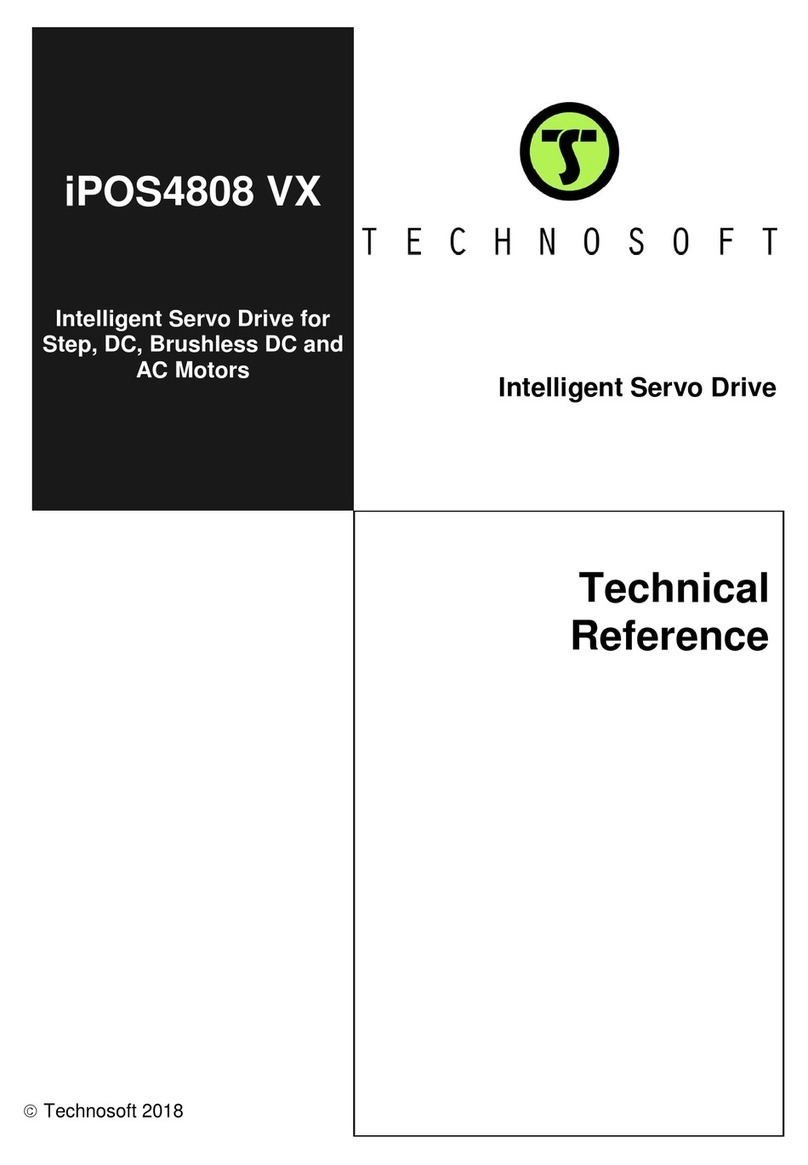
Technosoft
Technosoft iPOS4808 VX Technical reference
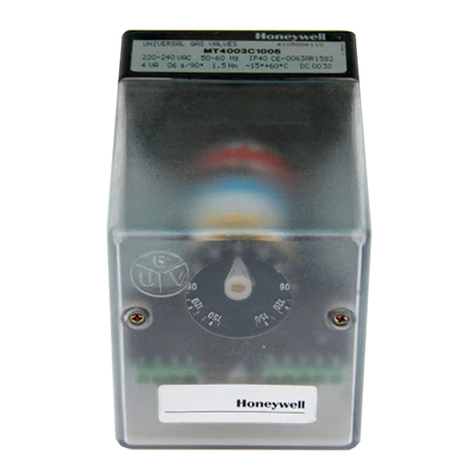
Honeywell
Honeywell MT4000 Series instruction sheet

Mitsubishi Electric
Mitsubishi Electric Melservo-J3 Series MR-J3-B manual
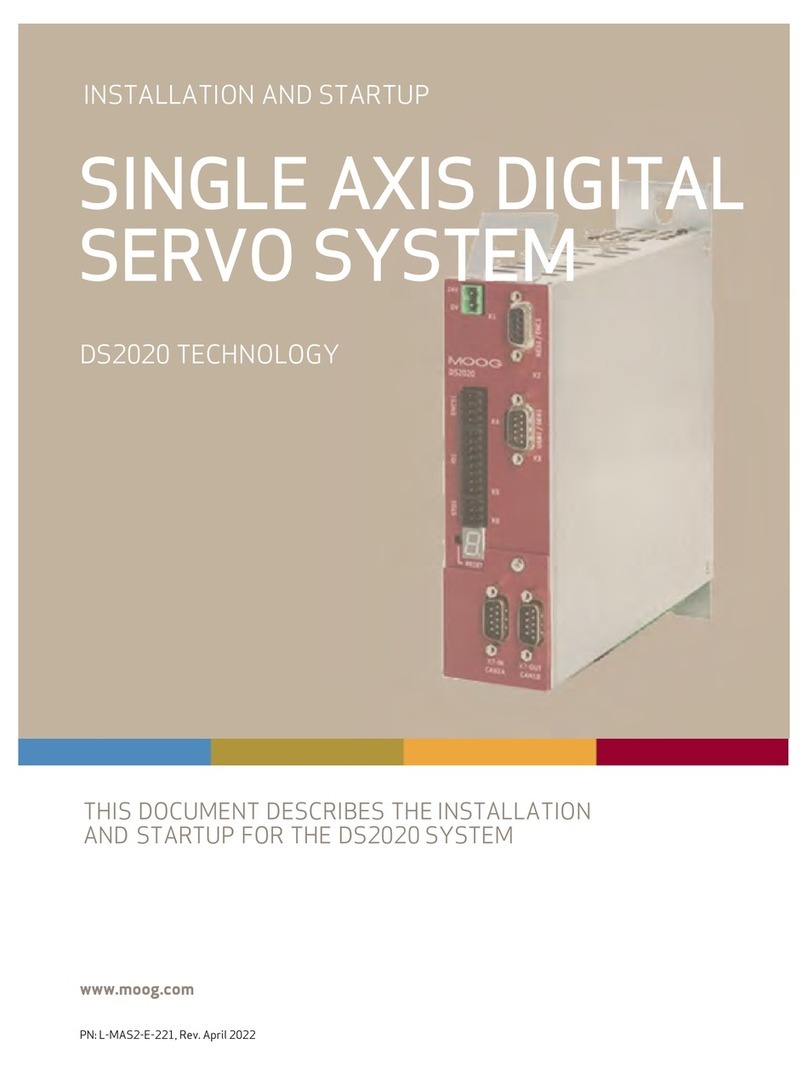
Moog
Moog DS2020 Installation and startup guide
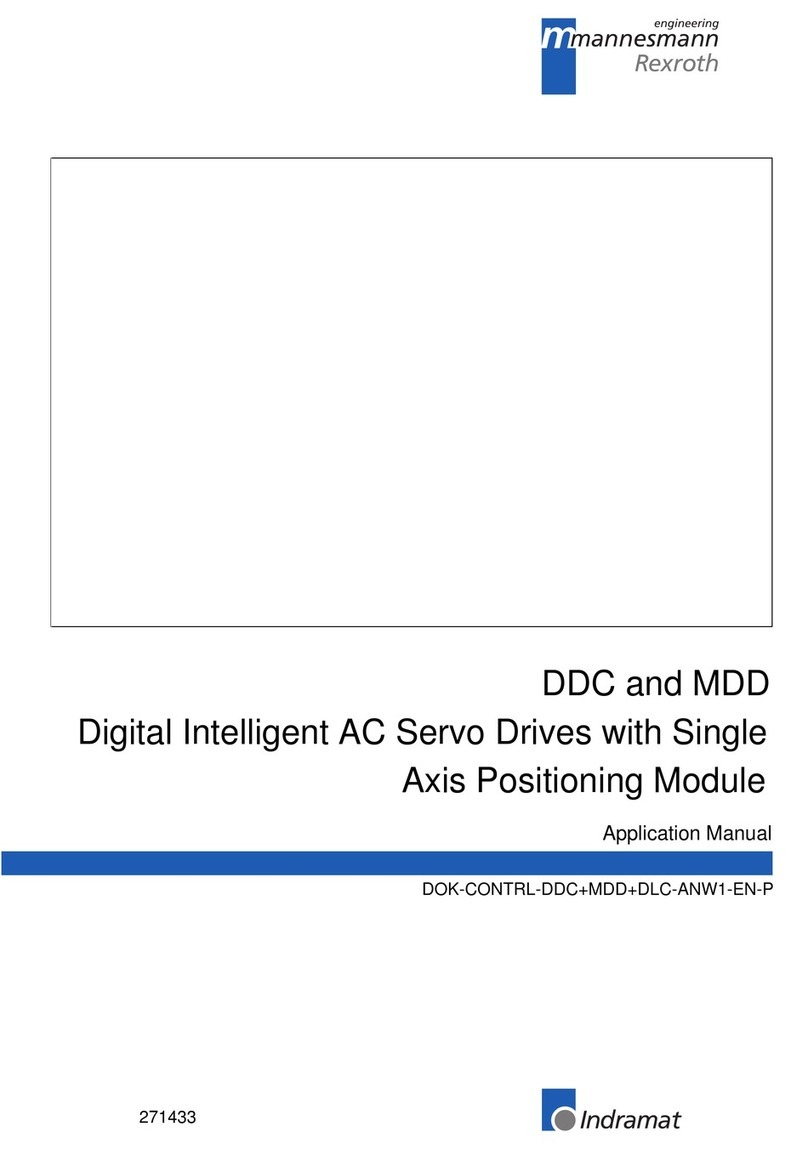
Mannesmann Rexroth
Mannesmann Rexroth Indramat DDC Series Applications manual

Omron
Omron SMARTSTEP Junior user manual

GFA ELEKTROMATEN
GFA ELEKTROMATEN ELEKTROMAT SI 100.24-55,00 installation instructions
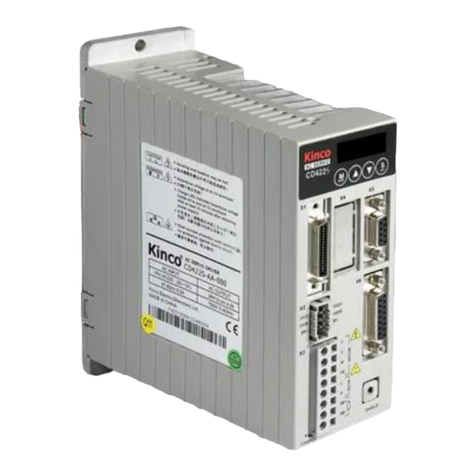
Kinco
Kinco CD2S Series user manual
SYNAPTICON
SYNAPTICON SOMANET Circulo Hardware manual
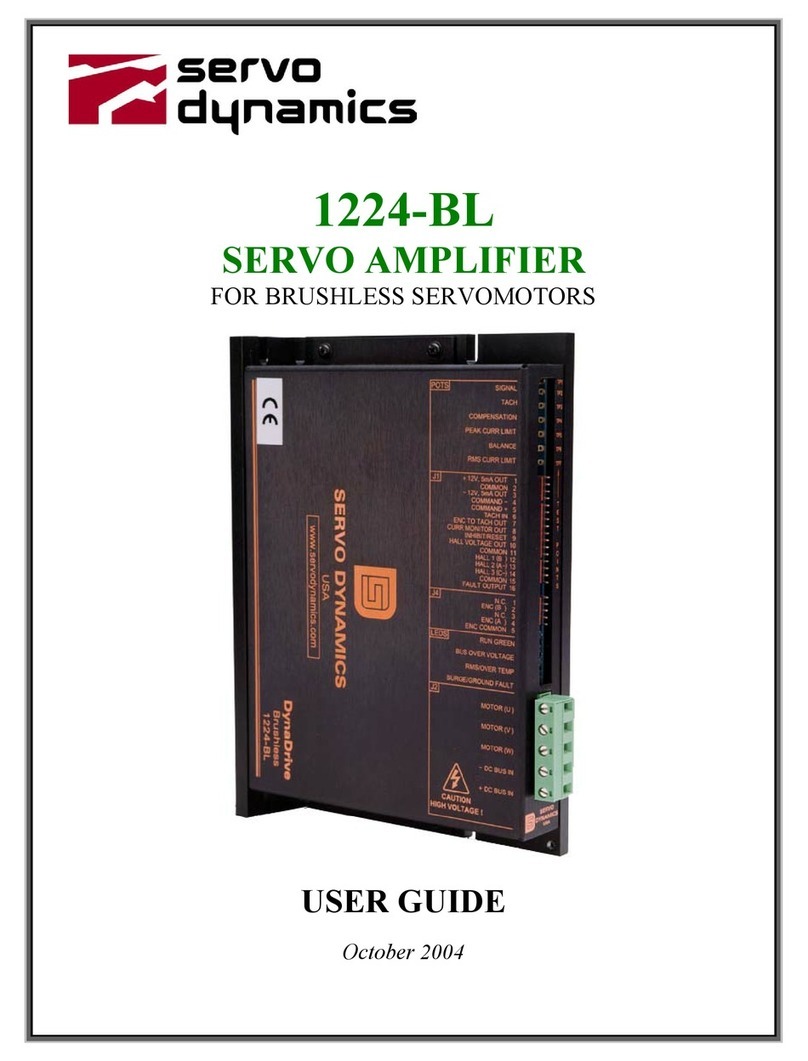
Servo Dynamics
Servo Dynamics 1224-BL user guide

Eurotherm
Eurotherm 637+/D6R KD6R product manual
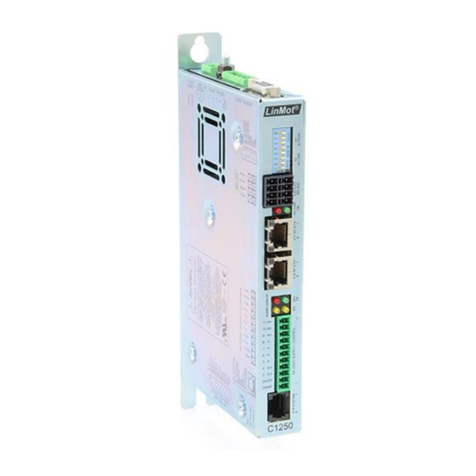
LinMot
LinMot C1250-MI installation guide
